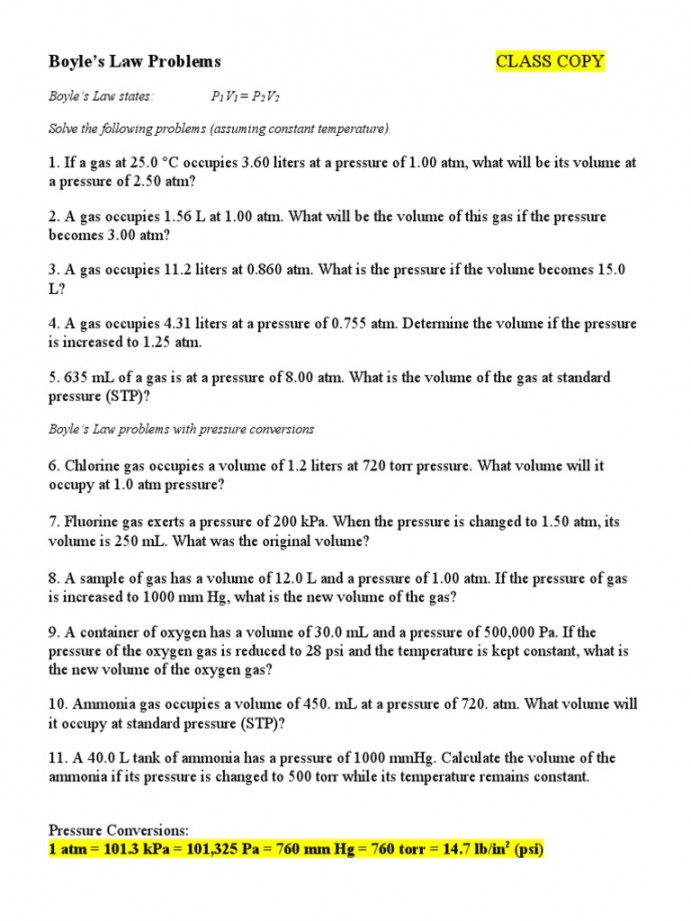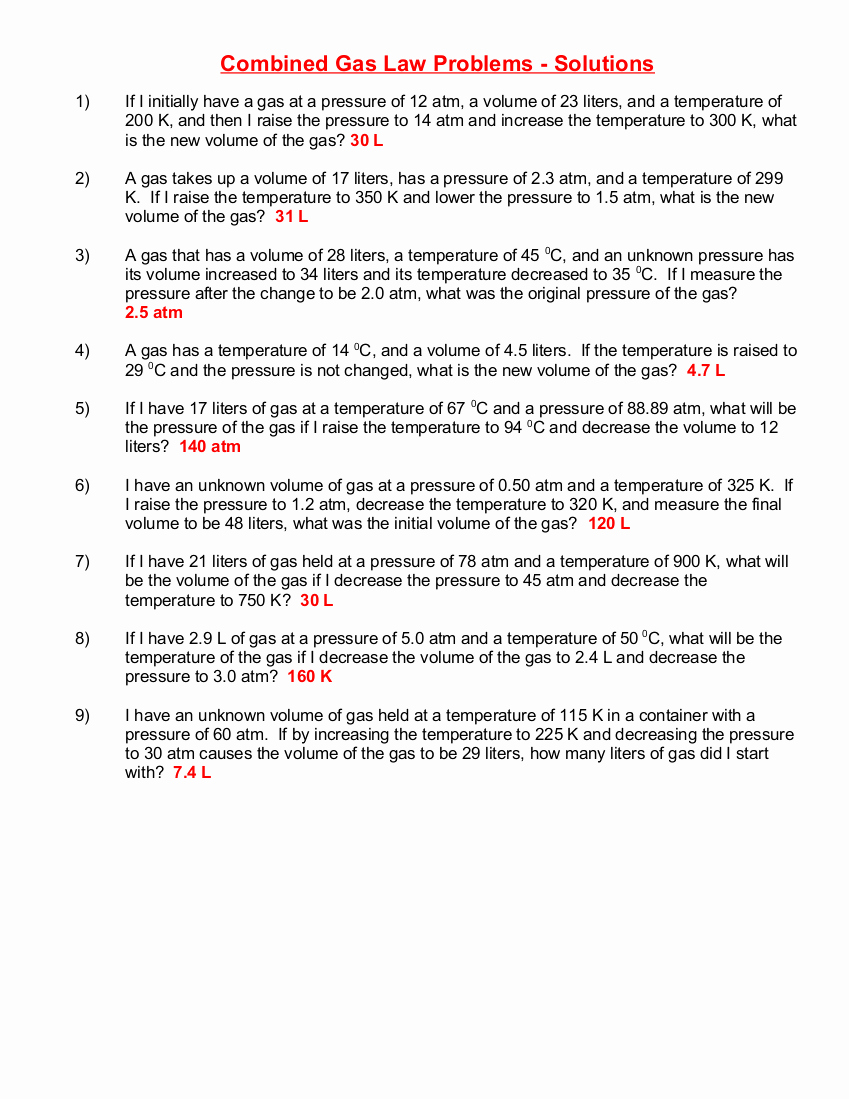Boyle’s Law is a fundamental principle in physics that describes the relationship between the pressure and volume of a gas at a constant temperature. This law states that the pressure of a gas is inversely proportional to its volume, meaning that as the volume of a gas decreases, its pressure increases, and vice versa.
Understanding Boyle’s Law is essential for students studying physics or chemistry, as it helps explain the behavior of gases under different conditions. To reinforce this concept, teachers often provide students with worksheets that include problems related to Boyle’s Law.
Answer Key:
1. If the volume of a gas is reduced to half its original size, what will happen to its pressure?
Answer: The pressure of the gas will double.
2. A gas at a pressure of 2 atm has a volume of 4 L. If the volume is decreased to 2 L, what will be the new pressure?
Answer: The new pressure will be 4 atm.
3. If the pressure of a gas is quadrupled, what will happen to its volume if the temperature remains constant?
Answer: The volume of the gas will be reduced to one-fourth of its original size.
4. A gas has a volume of 6 L at a pressure of 3 atm. If the pressure is decreased to 2 atm, what will be the new volume?
Answer: The new volume will be 9 L.
5. How does Boyle’s Law demonstrate the relationship between pressure and volume in a gas?
Answer: Boyle’s Law shows that as the volume of a gas decreases, its pressure increases proportionally, and as the volume increases, the pressure decreases.
In conclusion, understanding Boyle’s Law and its application to gas behavior is crucial in the field of science. By practicing problems and using worksheets with answer keys, students can solidify their knowledge of this fundamental concept in physics and chemistry.

